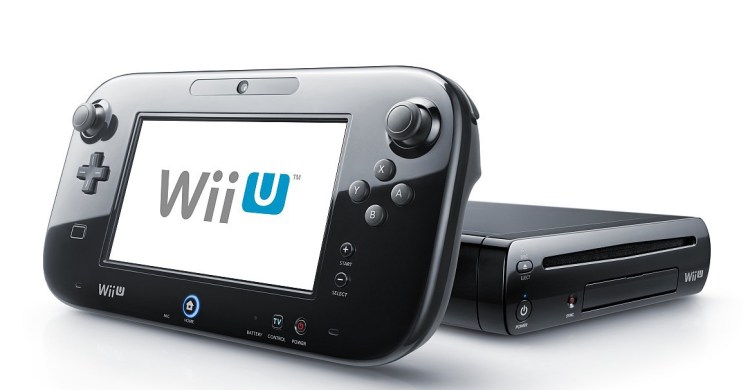[Updated with reaction]
Nintendo is reportedly working on a project to replace its struggling Wii U home console with something called Nintendo Fusion, according to a rumor printed by the website Nintendo News.
The name “Fusion” evidently refers to the notion that the future portable gaming system and the console are being jointly developed. If it’s true, this shows that one of the world’s oldest game companies has no intention of being left behind by Microsoft and Sony in the technological dustbin — and that Nintendo is working on a way to revitalize its sagging bottom line in the multibillion dollar game industry.
A spokesman for Nintendo said it doesn’t comment on rumors or speculation.
A source told Nintendo News that the hardware systems may be named Fusion DS and Fusion Terminal. The portable machine will reportedly combine an ARM-based central processing unit from an unspecified chip vendor and a custom Adreno 420-based graphics processing unit from Advanced Micro Devices. It will have 3GB of main memory, including 2GBs for games.
The Fusion Terminal, or console, will reportedly use an AMD custom Radeon HD RX 200 GPU and a 64-bit IBM custom Power CPU with eight cores. Both the handheld and the console will be relatively beefy machines using those specs.
After last week’s news that Nintendo’s Wii U console is expected to sell 2.8 million units in the fiscal year ended March 31 instead of the expected 9 million, it’s clear Nintendo needs a new plan. The company is expecting to lose $240 million in the fiscal year, compared to its previous forecast of a profit of more than $500 million.
“What we know is that ‘Nintendo Fusion’ is a possible name that Nintendo is using for their next-gen hardware,” according to the Nintendo News story by Kevin McMinn.
Nintendo of America actually bought the name nintendofusion.com back in 2003. That name was originally related to a rock music and video game festival sponsored by Nintendo’s North American division.
Pallab Chatterjee, a seasoned chip engineering editor and founder of the Silicon Valley Trade Council, said, “A couple of things don’t make sense.” He noted that the Adreno cores are part of the Qualcomm Snapdragon chip set and are not offered or licensed to AMD. The ARM architecture currently cannot run PowerPC code that IBM uses in the existing Nintendo products. That would mean a 100 percent loss of legacy code compatibility, Chatterjee said.
He also said the 3GB of memory in the portable device also seems small for the applications that will reportedly run on the machine, especially if the screen is a high-resolution one. The camera specs seem a bit light as well, Chatterjee said.
The rumored specs are disclosed below:
Fusion DS
- CPU: ARMv8-A Cortex-A53 GPU: Custom Adreno 420-based AMD GPU
- COM MEMORY: 3 GB LPDDR3 (2 GB Games, 1 GB OS)
- 2 130 mm DVGA (960 x 640) Capacitive Touchscreen
- Slide Out Design with Custom Swivel Tilt Hinge
- Upper Screen made of Gorilla Glass, Comes with Magnetic Cover
- Low End Vibration for Gameplay and App Alerts
- 2 Motorized Circle Pads for Haptic Feedback
- Thumbprint Security Scanner with Pulse Sensing Feedback
- 2 1mp Stereoptic Cameras
- Multi-Array Microphone
- A, B, X, Y, D-Pad, L, R, 1, 2 Buttons
- 3 Axis Tuning Fork Gyroscope, 3 Axis Accelerometer, Magnetometer
- NFC Reader
- 3G Chip with GPS Location
- Bluetooth v4.0 BLE Command Node used to Interface with Bluetooth Devices such as Cell Phones, Tablets
- 16 Gigabytes of Internal Flash Storage (Possible Future Unit With 32 Gigabytes)
- Nintendo 3DS Cart Slot
- SDHC “Holographic Enhanced” Card Slot up to 128 Gigabyte Limit
- Mini USB I/O
- 3300 mAh Li-Ion battery
Fusion Terminal
- GPGPU: Custom Radeon HD RX 200 GPU CODENAME LADY (2816 shaders @ 960 MHz, 4.60 TFLOP/s, Fillrates: 60.6 Gpixel/s, 170 Gtexel/s)
- CPU: IBM 64-Bit Custom POWER 8-Based IBM 8-Core Processor CODENAME JUMPMAN (2.2 GHz, Shared 6 MB L4 cache)
- Co-CPU: IBM PowerPC 750-based 1.24 GHz Tri-Core Co-Processor CODENAME HAMMER
- MEMORY: 4 Gigabytes of Unified DDR4 SDRAM CODENAMED KONG, 2 GB DDR3 RAM @ 1600 MHz (12.8 GB/s) On Die CODENAMED BARREL
- 802.11 b/g/n Wireless
- Bluetooth v4.0 BLE
- 2 USB 3.0
- 1 Coaxial Cable Input
- 1 CableCARD Slot
- 4 Custom Stream-Interface Nodes up to 4 Wii U GamePads
- Versions with Disk Drive play Wii U Optical Disk (4 Layers Maximum), FUSION Holographic Versatile Disc (HVD) and Nintendo 3DS Card Slot
- 1 HDMI 2.0 1080p/4K Port
- Dolby TrueHD 5.1 or 7.1 Surround Sound
- Inductive Charging Surface for up to 4 FUSION DS or IC-Wii Remote Plus Controllers
- Two versions: Disk Slot Version with 60 Gigs of Internal Flash Storage and Diskless Version with 300 Gigs of Internal Flash Storage
VentureBeat's mission is to be a digital town square for technical decision-makers to gain knowledge about transformative enterprise technology and transact. Learn More



![Reblog this post [with Zemanta]](http://img.zemanta.com/reblog_e.png?x-id=48652d4d-261d-4bb4-936d-72a7c04b7f03)
